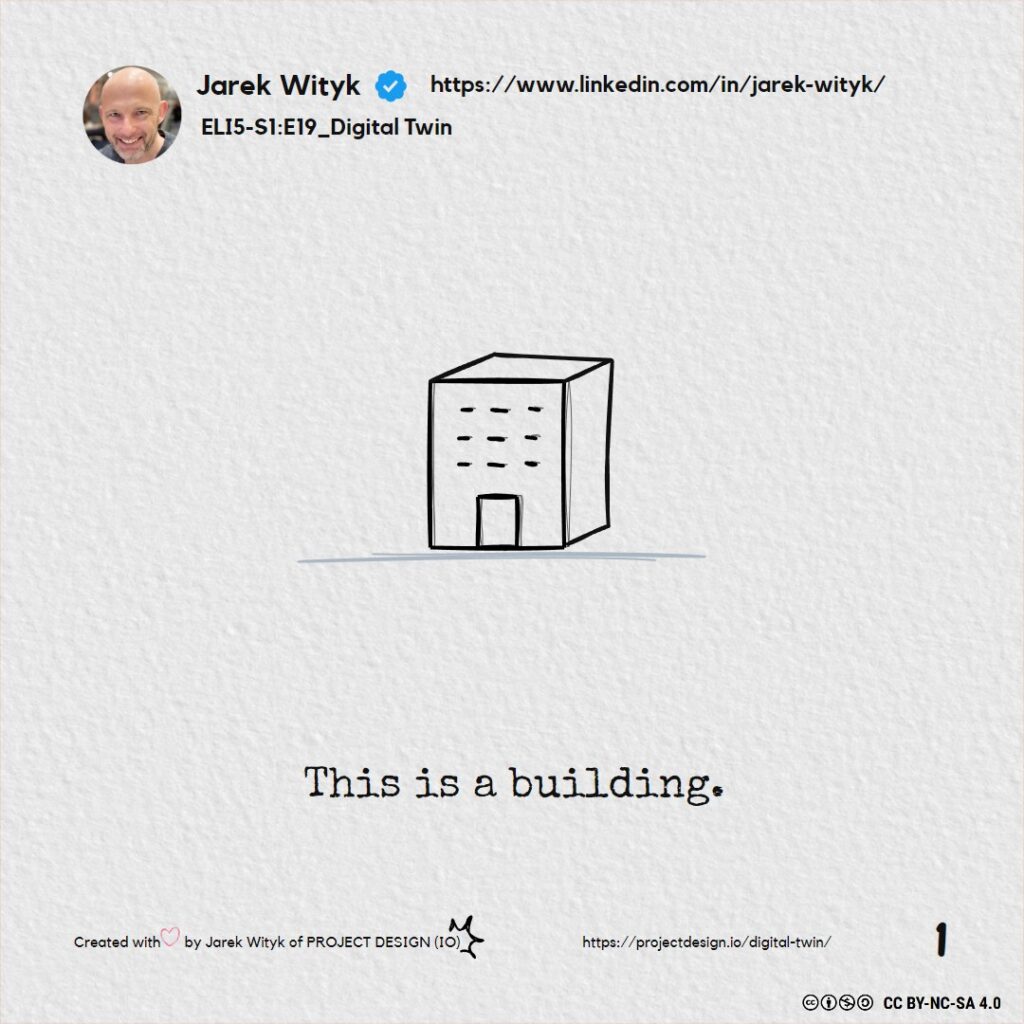in relation to data and information – also linked to interoperability means that it is provided or made available in a format that can be accessed and used withoutrecourse to the software that generated it. Openness is the opposite of proprietary, whereinformation and data are in the generating software’s native format and may or may […]
the meaning and benefits: single procurement of information that can be relied upon over time, removing the need for it to be repeatedly re-procured; a ‘Golden Thread’ of information to provide statutory information in order to improve compliance, health and safety and zerocarbon targets; faster, more efficient and reliable decision making using reliable information; efficient […]
One or more specific information exchange requirements may necessitate the need for a model view definition (MVD). A machine-readable representation of MVDs is required when using them in software development. Filtering information in software tools can be done by using an MVD that is only dedicated to one information delivery model (IDM). An MVD can […]
conceptual data schema and exchange file format for building information modelling (BIM) data BS EN ISO 23387:2020 In general, IFC, or “Industry Foundation Classes”, is a standardized, digital description of the built environment, including buildings and civil infrastructure. It is an open, international standard (ISO 16739-1:2018), meant to be vendor-neutral, or agnostic, and usable across […]
The Centre for Digital Built Britain (CDBB) CDBB is a partnership between the University of Cambridge and The Department for Business, Energy and Industrial Strategy (BEIS). It is the custodian of HM Government’s Digital Built Britain, UK BIM, International BIM and National Digital Twinprogrammes.

ELI5-S1 BIM Basics E19_Digital Twin “The digital twin is the virtual representation of a physical object or system across its life-cycle. It uses real-time data and other sources to enable learning, reasoning, and dynamically recalibrating for improved decision making.” [1] Integration of BIM and Digital Twin: BIM and Digital Twin technologies do not compete but are […]
An ecosystem of digital twins connected via securely shared data. https://www.cdbb.cam.ac.uk/DFTG/GeminiPrinciples
Purpose: Must have clear purpose Public good Must be used to deliver genuine public benefit in perpetuity Value creation Must enable value creation and performance improvement Insight Must provide determinable insight into the built environment Trust: Must be trustworthy Security Must enable security and be secure itself Openness Must be as open as possible Quality […]

Building Information Modelling (BIM)[1] broadly describes the processes employed during digital information management related to a built asset such as a building, bridge, highway or tunnel. ISO 19650 outlines a framework for the management of information during the life cycle of a built asset using better information management. While the term ‘Building Information Modeling (BIM)’ […]
COBie is a non-proprietary data format for the publication of a subset of building information models (BIM) that focuses on delivering asset data rather than geometric information. It is formally defined as a subset of the Industry Foundation Classes (IFC – the international standard for sharing and exchanging BIM data across various software applications), but […]
Depending on the technology discussed, the term attribute can be treated as equivalent to a property or as a set of attributes, such as the number of elements in a file or the size of an element in the file. An attribute defines a certain value for a particular instance of a particular property or […]
area of an expert’s […] proficiency and knowledge associated to one or several groups of properties BS EN ISO 23386:2020
description of a set of objects that share the same characteristics Note 1 to entry: The characteristics may be embodied by the use of properties, operations, methods, relations, semantics, etc.Note 2 to entry: Each class is a hierarchical element of a classification. [SOURCE: ISO 22274:2013, 3.4, modified — Note 2 to entry has been added.]BS […]
centralized repository of information about data such as meaning, relationships to other data, origin, usage and formatNote 1 to entry: The definition is from IBM Dictionary of Computing BS EN ISO 23386:2020
area of activity covering a science, a technique, a material, etc.Note 1 to entry: A domain can be associated with a group to which the property […] applies. BS EN ISO 23386:2020
person who, through knowledge or experience, has competence to give an opinion in the fields about which he/she is consulted[SOURCE: ISO 13302:2003, 3.10, modified — The domain “” has been removed; the NOTE has been removed.] BS EN ISO 23386:2020
globally unique identifier (GUID) its a unique object identifier that guarantees its uniqueness throughout its entire life unique, the identifier is usually generated using an algorithm a unique identifier generated using an algorithm [1] identifier given to a product that guarantees its uniqueness throughout its entire life [2] In Windows operating system and Windows applications […]
coordinated activity of an organization to realize value from assets Note 1 to entry: Realization of value will normally involve a balancing of costs, risks, opportunities and performance benefits.Note 2 to entry: Activity can also refer to the application of the elements of the asset management system.Note 3 to entry: The term “activity” has a […]
BIM Collaboration Format (BCF) is an open file format that allows the addition of textual comments, screenshots, and other information on top of the IFC model layer for improved communication among coordinating parties. It decouples communication from the model itself.
PD 19650‑0:2019 In short, the BuildingSMART Data Dictionary is a library for everything to do with the building. NumberName is an int key and string value that can be stored in number names. In the dictionary, you can use zero objects as keys and values, in the dictionary data field as values
named and individually scheduled physical item and feature that might require management, such as inspection, maintenance, servicing or replacement, during the in-use phaseNote 1 to entry: Components can serve as interacting objects in a system (3.13). [SOURCE: ISO 6707-1:2017, 3.4.1.4, modified — Note 1 to entry has been added.]BS EN ISO 23387:2020
data type consisting of a set of named values called elements, members, enumeral, or enumerators ofthe type
interacting objects organized to achieve one or more stated purpose [SOURCE: ISO/IEC/IEEE 15288:2015, 4.1.46, modified — The words “combination of” at the beginninghave been removed; “elements” has been replaced by “objects”; Notes 1 to 3 to entry have been removed.] BS EN ISO 23387:2020
language to provide system (3.13) architects, software engineers, and software developers with toolsfor analysis, design, and implementation of software-based systems as well as for modelling businessand similar processesNote 1 to entry: See ISO/IEC 19505-1. BS EN ISO 23387:2020
property of a phenomenon, body, or substance, where the property has a magnitude that can be expressed by means of a number and a reference. for example a measure with a unit. Quantities can appear as base quantities or derived quantities. EXAMPLE 1 Length, mass, electric current (ISQ base quantities).EXAMPLE 2 Plane angle, force, power […]
publication that is consulted to find specific information, particularly in a technical or scientific domain EXAMPLE See EN 771-1:2011+A1: 2015.Note 1 to entry: A reference document can be associated with any data present in a data dictionary (3.2). It caninclude document date and version.[SOURCE: ISO 23386:2020, 3.18, modified — EXAMPLE has been added; in Note […]
standard measurements of physical quantities that require a clear definition to be useful. The International Bureau of Weights and Measures (BIPM) is responsible for ensuring the standardization of the use of units of measurement in the measurement of weights and measures, as well as the definition and application of these in everyday life. real scalar […]
provides the data structure for data templates using objects, collections and relationships between them. The multiplicities in the UML diagram specify the range of allowablecardinality values, giving a specification of a data template within a data dictionary BS EN ISO 23387:2020
formal specification is provided in the EXPRESS language. BS EN ISO 23387:2020
A deactivation request corresponds to a modification of the property. After validating of the deactivation request by the experts, the value of the calculated status of the property changes to “inactive”. The property is not deleted from the system (property archive). EXAMPLE The user found a property which is no longer applicable and proposes to […]



